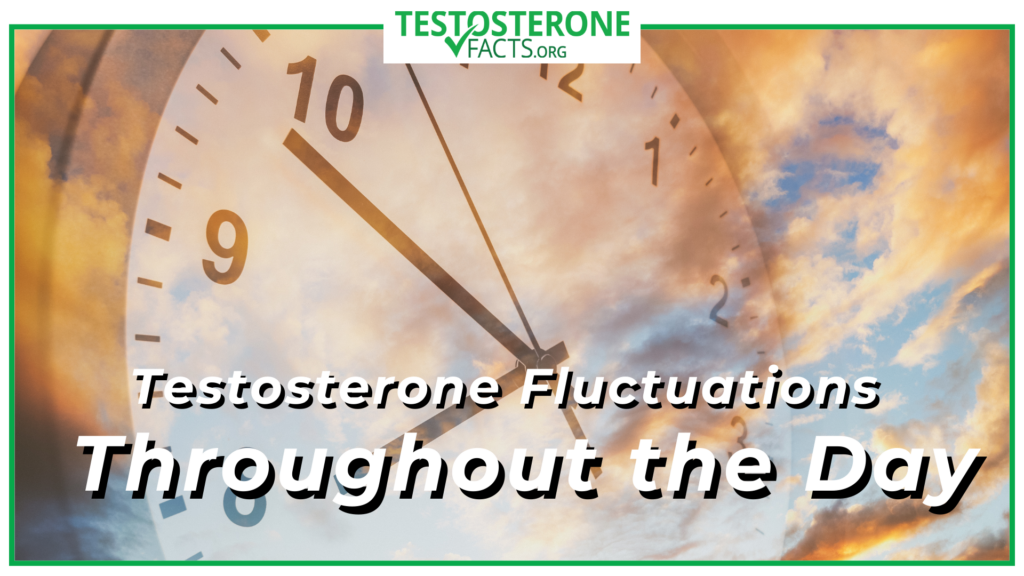
Testosterone Fluctuations Throughout the Day: What’s Normal
- TFacts Staff

Testosterone levels are not constant and can vary during the day and affect many different aspects of health and functioning. These variations are essential to know to make a correct interpretation of blood tests. Testosterone is usually expressed in nanograms per deciliter (ng/dL), and the majority of physicians have set a “normal” range at the 300-1000 ng/dL interval. These variations are due to factors like time of the day, stress levels, and physical activity done during the day.
Essentially, realizing what regular changes from day to day will enable the body to understand the hormone level and health issues associated with it. In this guide, we will also discover more about these changes and the impact that Testosterone levels have on your well-being.
Table of Contents
ToggleUnderstanding Testosterone Levels
Testosterone is an androgen hormone that is commonly associated with men but is also present in women, albeit in significantly lesser quantities. It is essential in the formation of male sexual organs, the sustenance of muscle and bone tissues, and sexual activity. In the process of aging, especially after middle age, the production of testosterone decreases, and a man might have testosterone levels lower than the average value, according to medical data.
These consequences can lead to various health problems, such as decreased energy, loss of muscle mass, and a decrease in sexual drive. Others consider low testosterone as usual and expect it with increasing age, but hypogonadism affects an individual’s health. Low testosterone levels are usually managed with the consultation of a physician to assess the proper management to enhance the health of the patient.
Understanding What Constitutes Low Testosterone
Blood tests measure testosterone levels, and doctors describe normal levels differently, with the most common range between 300 and 1,000 ng/dL. Nevertheless, about 40% of the male population over 45 years old may have a testosterone level below this range. It is essential to understand that one low reading does not necessarily indicate that the intervention is ineffective.
It is also quite essential to note that the timing of the blood test determines the results that should be expected. As for the testing, it should be performed at 7-10 a.m. because the testosterone level is the highest at this time. Dr. Ronald Swerdloff, the head of endocrinology at Harbor UCLA Medical Center, said, “Different hormones have different secretion patterns,” and therefore, the tests conducted during the afternoon are generally low. He further says that one should get multiple tests – at least two, preferably in a couple of weeks or months.
Beyond the Numbers: When to Be Concerned About Testosterone Levels
If you have your testosterone level below the normal range, such as in the range of 200-300 ng/dL it may not mean that there is a problem. This range is seen as ambiguous, and a slightly low reading is not necessarily a cause for concern in most cases. However, one needs to pay attention to symptoms associated with low testosterone levels.
As Dr. Bradley Anawalt, the chief of medicine at the University of Washington, noted, “If a man has a testosterone level that is significantly below normal, he needs treatment; however, if his testosterone levels are slightly below normal, as is more common, then one has to consider the symptoms.” If such symptoms are felt, it is essential to consult the doctor to find out if treatment is required.
Uncovering the Causes of Low Testosterone
Low T, also known as hypogonadism, occurs when a man experiences a decrease in testosterone production in his body. The causes can be related to injuries or infections of the testicles, which are a primary source of testosterone, or the pituitary gland, which is responsible for hormone secretion. Endocrine disorders involving the pituitary gland also affect testosterone levels in the body.
Low testosterone is often associated with several conditions, including:
- High Blood Pressure: High blood pressure can affect the hormonal balance of the body.
- High Cholesterol: Lipid disorders may result in hormonal disturbances, especially cholesterol.
- Diabetes: It is a known fact that diabetes affects hormone secretion and synthesis.
- Obesity and Overweight: Obesity is inversely proportional to testosterone levels in the body due to various factors.
- HIV and AIDS: These conditions can affect hormone production and thus have a bearing on the general health of an individual.
- Long-term Medication Use: Some medicines, like opioids, can lead to the reduction of testosterone levels.
In case you do not have these conditions, it may be hard for your doctor to determine the root cause of low testosterone levels. This is not an unusual occurrence and may be more often observed in older males. However, the lack of a primary cause does not necessarily leave you high and dry. There are several ways to treat low testosterone and incorporate changes that can enhance the patient’s well-being.
Effective Treatments for Low Testosterone
Treatment of low testosterone levels usually starts with assessing and enhancing one’s quality of life. Making drastic changes to one’s lifestyle can also have a direct effect on testosterone production.
For obese people, minor weight reductions can significantly change testosterone levels, with about 7% to 10% of weight loss being enough to produce improvements.
Dr. Bradley Anawalt goes on to point out that anything that impacts overall health impacts testosterone and that healthy living, which includes eating right, exercising, and quitting alcohol and smoking, is key to ensuring high testosterone levels.
Moreover, other measures include adopting changes in lifestyles, quality sleep, and stress management since these aspects affect hormone regulation.
In case lifestyle changes cannot suffice, testosterone replacement therapy can be a viable solution. Various methods for administering testosterone include:
- Injections: Testosterone injections are usually given into the muscle, and the dosage is administered every two weeks. The last one also has an extended-release formulation, which means that the dosage has to be taken less often.
- Patches: These are applied on the skin and used daily to release testosterone in the skin at a constant rate.
- Gel: Testosterone gels are applied to the skin daily and help increase hormone levels in the body.
- Tablets: Usually taken two times a day but prescribed less frequently due to possible adverse effects.
- Pellets: These are inserted subdermally and remain active for 3 to 6 months as they steadily release testosterone.
Conclusion
Testosterone levels change throughout the day, and these changes affect different aspects of health. Realizing these natural fluctuations is crucial when analyzing your hormone balance and its effects. These fluctuations are inevitable due to factors such as time of day, stress, and physical activity.
To manage your health more easily, always ensure that you understand how your testosterone levels fluctuate and find ways of dealing with any symptoms that you may encounter. Adherence to appointments with your doctor and sharing any changes you feel will assist you in handling any of these fluctuations for good health.
Frequently Asked Questions
1. What is the effect of high testosterone?
The levels of testosterone fluctuate depending on certain factors such as time of the day, stress, level of physical activity, and age. They are usually higher in the morning and tend to diminish as the day goes on.
2. When is the best time to test testosterone levels?
The best time is in the morning, between 7 and 10, as testosterone levels will be high then.
3. What are common symptoms of low testosterone?
Some signs include low sexual desire, decreased physical activity, losing muscle mass, constantly feeling tired, and having mood swings.
4. How can lifestyle changes impact testosterone levels?
Eating the right foods, shedding unwanted pounds, exercising, drinking less alcohol, and quitting smoking can boost testosterone.
5. What treatment options are available for low testosterone?
Lifestyle change and hormone replacement therapy using injections, patches, gels, or pellets and managing other medical conditions.




